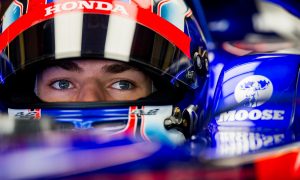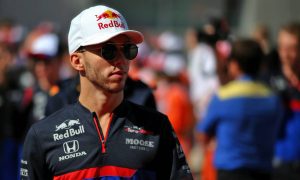
One of the biggest changes in store in this year's Formula 1 world championship is the addition of the new Halo cockpit protection device.
The FIA has made the Halo mandatory on all cars this season. Teams have been finding it tricky to incorporate the device on their new chassis designs without impairing the aerodynamics.
Drivers meanwhile are worried about the impact it will have on visibility. And fans are simply anxious about how the look of the cars will be affected.
But Toro Rosso technical chief James Key predicted that the Halo would quickly become an accepted part of the sport's aesthetic.
"My gut feeling is it's something we'll just get used to," he told RACER magazine this week.
"There will be talk and all sorts of opinions I'm sure," he continued. "All of them no doubt valid. But I think ultimately it's just something we'll get used to.
"We'll get back to worrying about the racing pretty quickly."
All teams got to try out the prototype Halo in 2017 during Grand Prix practice sessions. But that was a very basic design, rendered in black materials.
When the Halo makes its race début in Australia, teams will have been able to accessorise it with small aerodynamic fairings and winglets. In addition they will be able to adjust the colour to suit their individual liveries.
"I think with the aero bits on it then it will look slightly more Formula 1, let's say, than the frames we saw before," said Key.
"They will be a little bit more refined visually," he added. "Teams have had time to work a bit on optimizing the aerodynamics around them.
"We'll have to see how it goes," he summarised.
Key did admit that the addition of the Halo had made for extra work at Toro Rosso over the winter. However, the new car has now passed the FIA's homologation tests.
"It was certainly quite a new test and new set of requirements to take on board for chassis design," he said.
"Obviously everyone's a little nervous the first time you try it, but I'm glad to say it worked as planned.
"There's always some unknowns. There's no historic reference you can take with something as new and very different as the Halo tests compared to before.
"They're quite tough tests, as well. Clearly this has to be a very robust frame around the driver. That requires some quote heavy loading and tricky conditions applied to it to make sure it complies."
Gallery: The beautiful wives and girlfriends of F1 drivers
Keep up to date with all the F1 news via Facebook and Twitter







